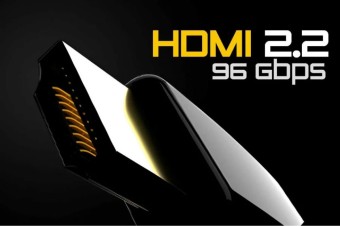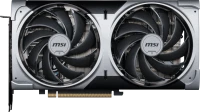Super or not: Comparison of GeForce GTX 1650, GTX 1650 SUPER, GTX 1660, GTX 1660 SUPER graphics cards
We independently test the products and technologies that we recommend.

And now let's see how powerful the new products turned out to be more powerful than their predecessors, and which of the "green" video cards is now more profitable to buy.
GTX 1650 VS GTX 1650 SUPER
The GeForce GTX 1650 SUPER is a mid-range product designed to play in Full HD resolution with high or ultra graphics settings. Everything will depend on the requirements of a particular game. In general, in terms of pure performance, it would be more correct to call it a stripped down version of the GeForce GTX 1660, rather than an improved GeForce GTX 1650. NVIDIA pulled off the same trick as with the flagship RTX 2070 SUPER card, using a stripped down version of the GPU from the RTX 2080 card.
 |
The GeForce GTX 1650 Super is based on a stripped-down Turing TU116 die configured with 1280 CUDA cores. The video buffer is represented by 4 GB of GDDR6 memory with an effective frequency of 12 GHz, and the interface width is 128 bits, which provides a maximum bandwidth of 192 GB / s versus 128 GB / s for a regular GeForce GTX 1650 on a TU117 GPU with 896 CUDA cores.
 |
The difference between the stock 1650 and 1650 SUPER makes you whistle. If we select the average FPS in 10 tested games (we note, quite heavy ones), then the usual 1650 will give out 39 FPS at Ultra settings and Full HD resolution. The super version fully justifies its console, raising the average number of frames per second to 53. Yes, these are not the reference 60 FPS, however, here you can already count on playing many games on Ultra. If you go down to high graphics settings, then everything will be even better. At the same time, the performance gap between the cards reaches an impressive 35%. And the price difference in this case is 10 - 20%, depending on the model of the video card.
GTX 1660 VS GTX 1660 SUPER
The basis of the GeForce GTX 1660 SUPER is a full version of the 12nm Turing TU116-300 GPU, which is used in the GeForce GTX 1660 model. It consists of 1408 CUDA cores, 88 texture units (TMU) and 48 render units (ROP). The operating frequencies of the GPU are the same: 1530/1785 MHz. But, as noted above, the GeForce GTX 1660 SUPER is equipped with a video buffer based on GDDR6 chips. As a result, a noticeable increase in the theoretical memory bandwidth by 144 GB / s, up to 336 GB / s. Passport value TDP - 125 watts. That's just 5W higher than the GeForce GTX 1660.
 |
The fall in prices in the memory chips market made it possible to equip the new product with the flagship GDDR memory of 6 GB and running on a 192-bit bus. Video memory of this kind, and even operating at a frequency of 1750 MHz, used to be the prerogative of flagship families.
 |
In contrast to the 1650 and 1650 SUPER, the struggle in this pair turned out to be more intense. Both cards offer excellent performance and deliver over 60 frames per second in any gaming blockbuster at high graphics settings and Full HD resolution. If you go up to Ultra settings, the FPS counter will drop to 40 in only a few particularly demanding projects like Red Dead Redemption 2 and Metro Exodus. In the final round, the GTX 1660 SUPER wins with a minimal margin, which in 10 test games at high settings produced an average FPS of 128 frames. For a regular GTX 1660, this figure was 122 FPS. That is, the difference in power here is quite small, about 5 - 6%. The difference in price is also not very different, rarely going beyond 10%.
By and large, the GTX 1660 SUPER has become an alternative to the well-established GeForce GTX 1660 Ti. That is, this is a product for games at 1080p resolution with a sufficiently high speed, capable of holding the coveted 60 FPS in most modern AAA projects. The decisive factor in favor of SUPER is a much better price than the Ti models.
Summary
 |
NVIDIA has been one step ahead of Radeon all year and warmed up the market with interesting models in advance. The SUPER line was the icing on the cake, offering users a nice boost in power at minimal overhead. The younger model GTX 1650 SUPER turned out to be more successful, which in most games at high graphics settings produces 15-20 FPS more than the regular GTX 1650. Well, in general, it turns out to be as much as 30% more powerful than its predecessor. If you choose between these options, then take SUPER without hesitation.
But in the GTX 1660 SUPER, the muscles did not grow so much and she failed to knock out the usual GTX 1660. The difference in performance and asking price is the same plus or minus, so you should look for the benefit in some specific successful lines from Gigabyte, MSI, Palit and Asus. But if you were looking at the GTX 1660 Ti, then you better take SUPER. It is slightly more powerful and significantly cheaper.
Articles, reviews, useful tips
All materials
































